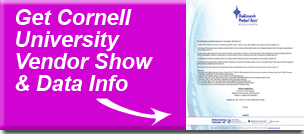In a recent flux of research laboratory constructs, a majority of the 21st century designs and new facilities fall under the sustainable category. But what makes a laboratory, or any other building, sustainable?
(image courtesy of treehugger.com)
First of all, a typical construct research laboratory utilizes five times as much energy and water/sq ft as a regular business office. This is for several reasons.
- One, labs contain a large number of containment and exhaust devices. This means that not only are primary energy sources necessary, but also precautionary, emergency, and backup devices are required to be powered almost constantly.
- Secondly, research facilities generally have a lot of heating equipment, such as burners, heaters, and specialized laboratory equipment, which consume energy at a higher rate.
- Third, many laboratories, as they may be dealing with toxic chemicals, have intensive ventilation requirements that do not cycle their air, rather push it through the building only once before expelling it.
By studying and problem-solving the issues with the typical laboratory, researchers and architects around the globe have worked together to identify significant opportunities for improving energy efficiencies while simultaneously meeting health codes and standards. Many sustainable designs add to worker comfort and productivity as well.
We've compiled a list of what truly makes a laboratory sustainable, from the construction to daily usage of the completed facility:
1. Increased energy and water conservation and efficiency
Ways to boost a building's energy efficiency include:
- Lighting the interior of the building mainly with ambient/natural light
- Focusing designs to be climate-responsive (i.e. external shading with deciduous trees to provide shade in summer and sunlight in winter, windows in the south)
Ways to reduce water usage and boost efficiency:
- Reducing water usage through low-flow fixtures, leak-free piping, water recovery for irrigation, etc.
- Follow standards and requirements such as FEMP and EISA 2007 Hydrology
(image courtesy of coloradolocalfirst.com)
2. Eradication or reduction of toxic and harmful chemicals, waste, and other substances
- Renovation of existing facilities with harmful components (i.e. asbestos)
- Evaluation of construction products from cradle-to-cradle
- Maximize recyclable products, especially from a consumer's perspective
- Limit construction waste by separation of waste streams
- Eliminate use of toxic or polluted materials
(image courtesy of aprilinteriors.blogspot.com)
3. Internal workspace improvements, ensuring the comfort and boosting productivity of workers
- Put emphasis on aesthetic quality like views and integration of natural/relaxing elements
- Prevent airborne bacteria with quality ventilation and air conditioning
- Design work spaces to be acoustically sound and private
-Incorporate natural aspects into workspace
(image courtesy of interiordesign.net)
These components are vital to a healthy and sustainable work environment, yet are especially vital in laboratories where the risk factor is higher due to human error and potentially hazardous experiments.
Article/information courtesy of Whole Building Design Guide
If you are a laboratory manager and/or researcher interested in the components of sustainable facilities and want to learn how to attain such equipments to improve your work environment, attend Biotechnology Calendar, Inc.'s upcoming tradeshows across the nation.
The next BioResearch Product Faire™ tradeshow in the Northeast is at Cornell University in Ithaca, NY on October 13th, 2011. To get more information on this 3rd annual Frontline Event, click below:
The next BioResearch Product Faire™ tradeshow event in the Northwest is at the Oregon Health and Science University in Portland on September 1st, 2011. OHSU also pursues sustainability vigorously, with OHSU's Biomedical Research Building recently achieving Silver LEED Ranking... read more.
The next BioResearch Product Faire™ tradeshow in the Midwest is at the University of Wisconsin, Madison on September 8th, 2011. UW Madison embraces sustainability with its Sustainability Initiative, and currently hosts student work forces laboring to make the campus more self-sustaining.


